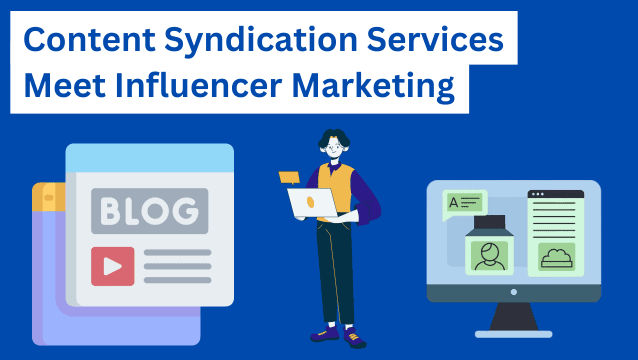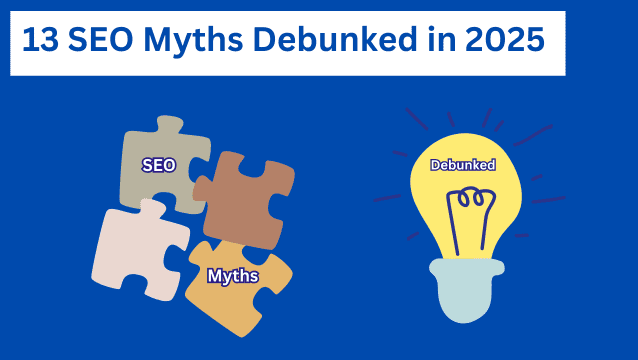Generative AI is revolutionizing the way people search for information.
Thanks to tools like ChatGPT and Perplexity, more users are bypassing Google Search and turning directly to AI for answers, sparking the notion that “SEO is dead.” But that isn’t true. SEO isn’t dead; it’s evolving.
And with this evolution comes a new type of optimization: Generative Engine Optimization (GEO).
However, it isn’t an either/or situation; you need both SEO and GEO to work together to ensure your brand remains visible in the new era of search.
In this article, I’ll break down the difference between GEO and SEO, where they overlap, and when to use each in your 2025 business strategy.
Highlights
- SEO and GEO Serve Different Search Channels
- GEO Optimization Is Crucial for AI-Driven Search Trends
- Key GEO Tactics Focus on Structure, Clarity, and Authority
- GEO and SEO Use Different KPIs and Tools
- Combining GEO + SEO Will Future-Proof Your Strategy
GEO vs SEO: What are they?
SEO (Search Engine Optimization) aims to enhance your website’s ranking on traditional search engines, such as Google and Bing.
GEO involves optimizing your content for large language models (LLMs) and their AI-generative platforms, including Google’s AI Overviews, Gemini, ChatGPT, and Perplexity.
Although there’s an overlap in the optimization processes between the two, they have distinctive differences.
Screenshot provided by author
Search engine optimization (SEO): Quick recap
The goal of SEO is to increase the visibility of your website on Search Engines, such as Google and Bing, using internal and external strategies to enhance your site’s authority and improve the user experience.
SEO focuses on:
- Crawling and indexing: Making sure Google can crawl and index your website
- Ranking signals: Optimizes your technical setup, including keywords and backlinks, and your content’s relevance to user intent
- User experience (UX): Fast load times, mobile-friendly layouts, secure browsing
SEO KPIs show how effective your strategies are by tracking your website’s performance in search results and include:
- Bounce and conversion rates
- Click-through rate (CTR)
- Keyword rankings
- Organic traffic
What is generative engine optimization (GEO)?
GEO (Generative Engine Optimization), also called LLMO, optimizes your content for AI-generative tools to ensure they can understand, summarize, and use it for AI-generated answers.
GEO focuses on:
- Content structure: Clear H2s/H3s, bullet points, schema (code that helps search engines understand your content), FAQs
- Authority: Citations, sources, and expert quotes to enhance trustworthiness
- Relevance: Meeting the user’s intent by providing concise answers
- Clarity: Short, accurate, and engaging information
GEO KPIs measure how often your content appears on AI answer platforms and community forums that LLMs use to source information, such as Quora, Reddit, and Wikipedia, and include:
- Presence on platforms LLMs use for content sourcing
- Citations and mentions in LLM platforms
- Brand mentions in generative snippets
- Visibility in AI answers
What’s the difference between GEO and SEO?
The SEO world has yet to agree on the terminology. Some refer to it as GEO, while others call it AEO (Answer Engine Optimization). Either way, the core difference is:
- SEO: Optimizing your website to rank in traditional search engines and drive organic traffic
- GEO: Optimizing your content to appear in AI-generated responses by focusing on answer ranking
Despite their differences, you don’t choose one over the other; it’s about combining both strategies, so let’s look at how they work together next:
What are the similarities between SEO and GEO?
GEO and SEO differences aside, both are essential for modern marketing, and understanding how they overlap can help you optimize your content for AI-driven and traditional search engines.
SEO and GEO similarities include:
- High-quality content that’s relevant and meets user intentions whilst adhering to Google’s E-E-A-T (experience, expertise, authoritativeness, and trustworthiness) principles
- Structured data and formatting (H1s, H2s, lists, FAQs), and clear, concise language that readers and AI generative tools can easily read and navigate
- SEO and GEO involve the use of chosen keywords that help improve your content’s relevance and discoverability
- Both aim to create authority in your niche using credible content and partnerships that enhance reliability and trustworthiness
- User experience is another crucial overlap between SEO and GEO, with both prioritizing engaging, well-written, informative content.
Is GEO the new SEO?
GEO is not replacing SEO; it’s a partnership that helps users find your brand in both traditional and generative search platforms.
Websites still need traditional ranking factors, such as backlinks and authority, so users see and click your link in the SERPs, and those come from your SEO.
But your content structure, formatting, and expertise are where your GEO comes into play, so when users ask questions, LLMs answer engines choose your content for their summaries.
GEO vs SEO: Key differences at a glance
SEO and GEO have distinct goals, channels, KPIs, tools, timelines, and optimization strategies, so it’s crucial to understand how each contributes to your marketing strategy.
Here’s a quick breakdown:
Category | SEO | GEO |
| Goal | Rank high in search engines to attract organic traffic | To feature in AI-generated answers to boost brand visibility |
| Focus | Keywords, search intent, and technical optimization | Clear, structured content and entity recognition for AI engines |
| Audience | People searching via Google, Bing, etc | AI models respond to user queries in real-time |
| Content format | Blog posts, detailed articles | Short, concise answers/snippets |
| Output | Blue links on SERPs, snippets, and site visits | AI-summarized answers, citations, and conversational mentions |
| Tools | Ahrefs, Google Search Console, SEMrush, Screaming Frog | Perplexity, ChatGPT, SparkToro, Reddit/Quora tracking tools |
| When to use | Always—foundational for online visibility | When targeting AI search users, complex queries, or brand awareness |
Goals of SEO and GEO
SEO and GEO have one goal in common: to improve your brand’s visibility, but on different platforms.
- SEO: Aims to increase your site’s rankings on the Search Engine Results Page (SERP) to drive organic traffic to your website
- GEO: Aims to improve your website’s visibility within AI-powered platforms to ensure your content is easily understood and summarized
KPIs for SEO and GEO
SEO and GEO use different performance indicators; SEO analyzes search engine user behavior, while GEO focuses on brand presence in AI-generated content.
- SEO KPIs: Include organic traffic, keyword rankings, backlink effectiveness, conversion, and bounce rates
- GEO KPIs: Include AI answer inclusion and brand citations rates, besides AI referral traffic.
Tools for SEO and GEO
As the goals, channels, and KPIs differ for SEO and GEO, so do the tools. SEO tools enhance website rankings by analyzing backlinks, conducting technical reviews, and identifying relevant keywords. GEO tools monitor your brand’s presence across AI and community-powered sources.
- SEO tools: Ahrefs, Google Search Console, SEMrush, and Screaming Frog
- GEO tools: Profund, ScrunchAI.com, and Peak.ai.
Time for results for SEO and GEO
SEO and GEO are long-term strategies, but GEO can provide fast results for brands with a strong digital authority.
- SEO: Provides results in 3–6 months with consistent effort and relevant technical improvements
- GEO: Brands with an established presence on public platforms and traditional search engines can gain visibility in AI answers within 1–3 months
When to use GEO in your digital marketing strategy
You should start optimizing your content for GEO today because a Bain.com study shows that 80% of consumers are using AI summaries for over 40% of their searches.
And you don’t need your SEO to be perfect before optimizing for GEO, as it works for brands with and without a strong SEO foundation.
However, when you combine GEO with an ongoing SEO strategy, you increase your chances of dominating in AI and traditional search.
When using GEO makes sense:
1. You want to get ahead of AI traffic
A HigherVisibility survey shows that 71.5% of people are using AI tools for their search queries. While 79.8% still prefer using traditional search engines like Google and Bing for general informational searches, search query trends are shifting towards AI.
By investing in GEO now, you’re positioning your brand ahead of your competitors in generative AI results and gaining a visibility edge.
- Use GEO to engage users experimenting with ChatGPT, Perplexity, or Gemini, and for future-proofing your brand’s discoverability
2. You’re targeting long-tail queries
According to Google’s VP of search, Elizabeth Reid, search queries are growing more complex and longer. And with each new generation, this trend continues to grow; Gen Z uses, on average, 5 words per search, while Boomers use around 4.
Screenshots provided by author
AI tools devour long-tailed queries, and GEO helps match your content with these conversational style search terms, increasing your chances of appearing in AI-generated answers.
- Use GEO to publish content aimed at niche or intent-driven search queries that may not always appear in traditional SERPs
3. You want to be listed in “Best XXX Tools” style prompts
Generative AI platforms use structured data to understand your content and create summaries.
Using GEO to add structured data into your content can enhance its chances of appearing in AI-generated summaries and rich results, even if it doesn’t rank well in Google search results.
- Use GEO to compete in crowded categories and niches to increase your visibility in AI-generated lists
4. You’re building topical authority
GEO helps build your topical authority (your website’s perceived reliability and credibility based on the quality of your content) to encourage AI engines to source and summarize your expertise when sourcing information related to your field.
- Use GEO when creating a volume of topic-specific content in your niche to establish topical authority and increase visibility
5. You’re launching a new or unknown brand
Traditional SEO takes time for new or unknown brands. Geo can help increase your brand’s visibility by attracting LLMs to use your content for AI-generated answers even before your site ranks in search.
- Use GEO to establish brand awareness and gain rapid visibility in AI summaries while your SEO efforts are still in development
6. You’re repurposing existing high-quality content
Websites with strong, high-performing SEO content can use GEO to add extra value by adapting it for AI-generated answers.
- Use GEO to optimize your ROI on evergreen content and expand its reach beyond traditional search results
Which brings us to the next important SEO vs GEO question:
Can I use SEO and GEO together? (Yes!)
Absolutely, GEO and SEO are not rivals; they’re partners and work together to future-proof your visibility across AI-generative tools and traditional search engines.
Think of it as having an extra lawyer of optimization at your fingertips because great SEO enhances GEO, enabling you to optimize it for AI comprehension, clarity, and summarization.
How long does it take to see results from GEO?
Websites with strong SEO and domain authority can expect to see content mentions in AI-generated answers within 1-3 months.
Brands starting from scratch can expect their GEO results to follow a timeline similar to a new SEO strategy, which typically ranges from 3 to 6 months.
Although GEO result timelines can vary depending on your niche, the level of competition, your content format, and whether you’re active on social information platforms like Quora, Reddit, or Wikipedia.
How to start with generative engine optimization
Starting with GEO involves auditing your brand’s current AI visibility, setting goals, and optimizing your content for AI readability.
Here’s how to launch a GEO strategy step-by-step:
1. Check your current GEO presence and set goals
To check your GEO presence, use generative AI tools like Perplexity, Gemini, or Poe to search for your brand or content. Are you mentioned? If not:
- Set clear goals around mentions, citations, or generative visibility
- Analyze user intent and optimize your content to ensure it meets it
2. Improve your brand visibility
AI engines prioritize content driven by known brands with authority in their niche.
A recent Search Engine Journal article confirms this:
- “AI prioritizes content from known, trusted entities, making authoritative content three times more likely to be cited in AI responses.”
The more visible your brand is, the more often AI will cite it:
- Invest in brand building by creating engaging and trustworthy content that fosters trust and credibility
- Secure mentions or guest posts on authoritative sites and reputable industry-related blogs
- Monitor your online reputation
- Encouraging reviews
3. Use structured data and clear formatting
Generative engines like Perplexity and Google’s AI Overviews pull information from well-organized content because it’s easier to summarize.
Structured data gives AI machine-readable signals that:
- Highlight key facts (like FAQs, product features, reviews, author info)
- Make it easier to quote your content in generated answers
- Clarify the meaning and relationships of your content
Generative AI models also rely on structural cues to understand the context of your content and extract usable pieces of information.
Clear-formatted content helps these models:
- Understand hierarchy (headings, subheadings)
- Summarize and rephrase accurately
- Identify question-answer pairs
4. Focus on user intent, not just keywords
LLMs feed off content that explains what, why, and how, much like we describe something using real-world, natural language.
Screenshot provided by author
By structuring your content around questions and answers, focusing on the user, and answering like an expert, you can help AI understand who it helps and why it matters, increasing its chances of being cited.
How to create user intent content:
- Write in a conversational Q&A style, anticipate the whole question, not just the keyword
5. Increase your footprint on community-powered engines
AI tools scraping information from user-generated platforms (UGC) like Reddit and Quora are a topic of controversy, as they often bypass the source of the information. Still, to take advantage of GEO, you must become part of the community conversation.
To increase your footprint on community-powered engines:
- Answer relevant questions and provide insights on Reddit, Quora, Stack Overflow, or niche forums
- Link back to your content to prove your expertise
6. Create or contribute to a Wikipedia page
LLMs use Wikipedia as a source of truth, which is why having a well-cited page increases your brand’s trustworthiness in generative search engines.
How to use Wikipedia as a trusted reference point:
- Create a well-sourced company or founder profile
- Contribute citations or edits to related topics where your brand is relevant
7. Build topical clusters and internal links
Topical clusters (also known as content clusters) organize your website’s content around one central topic, linking to other relevant pages throughout your site, which helps AI and traditional search engines understand your authority on that subject.
Internal links guide LLMs through your site, connecting related ideas and surfacing your content in context-rich AI answers.
How to do it:
- Create a network of related content around a central theme by linking blog posts and pages together using clear, descriptive anchor text that accurately reflects your content.
- Cover all subtopics in your niche to help LLMs identify you as an expert source.
8. Monitor and adjust
GEO isn’t a set-it-and-forget-it strategy; to achieve the best results, track when, where, and how your content and brand appear in AI answers.
Tracking and monitoring your GEO:
- Update and repurpose your content quarterly to stay relevant and answer new queries.
- Track brand mentions in Perplexity, Gemini, and via social monitoring tools.
How uSERP can support your generative engine optimization efforts
At uSERP, we go beyond backlinks and rankings.
We are an agency specializing in GEO and SEO strategies that help increase your brand’s visibility across traditional search engines and AI-generated answer platforms.To future-proof your brand by ensuring it appears where your audience searches for it, schedule an introductory call and discover how we can help.


